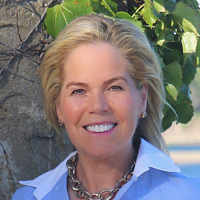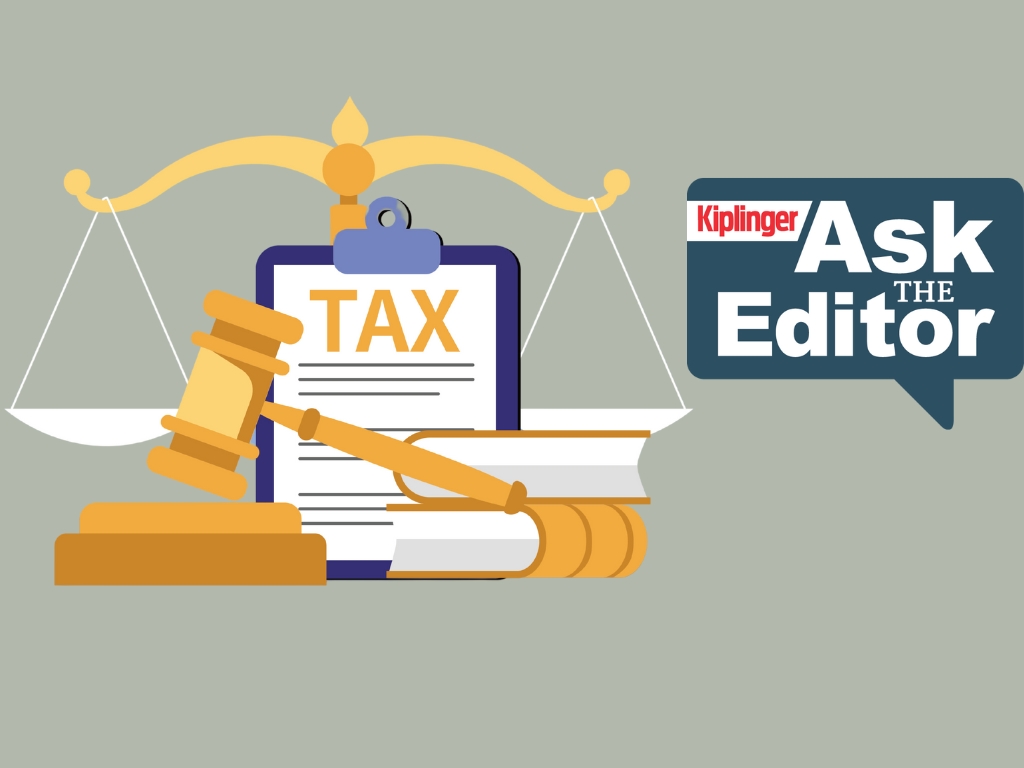The SECURE 2.0 Act’s Five Biggest Winners
Almost anyone planning for retirement wins with the SECURE 2.0 Act provisions, but some people could be bigger winners than others.


There are dozens of pleasant surprises among the bundle of new retirement rules collectively known as the SECURE 2.0 Act. These provisions that were included in the $1.7 trillion federal spending bill passed in December aim to expand ways people can save more money and defer taxes. Altogether, they will reshape how millions of Americans plan for retirement, including older adults stuffing away extra money in their nest eggs and those struggling to pay off student debt.
But these policy changes benefit more than just savers in 401(k) plans. If you’re a business owner, for instance, the SECURE 2.0 Act also makes it easier and less expensive to set up a retirement plan.
Essentially, almost anyone planning for the future wins with this new law. However, the people listed below come away as the big winners. Are you one of them?

High-Net-Worth Retirees
One clear winner: high-net-worth retirees, who benefit from the new RMD rules increasing the age for required minimum distributions (RMDs) from age 72 to age 73 in 2023 and then to age 75 in 2033.
RMDs force people to withdraw money from certain retirement accounts. But wealthy savers can often afford not to tap these funds to cover their expenses. Therefore, with more time before RMDs kick in, they can make their savings last longer, plus enhance their ability to pass on wealth to the next generation.
That’s because these retirees will have additional years to transfer funds from traditional IRAs and employer-sponsored plans to a Roth IRA, known as a Roth conversion. Although the amount you convert is taxed, Roth IRAs are not subject to RMDs, and withdrawals are tax-free. Heirs who inherit your Roth IRA can then enjoy the same tax benefits during the 10 years they would have to completely withdraw the funds.

Student Loan Borrowers
With an average student debt of more than $30,000, workers struggling with student loans typically have a difficult choice to make: pay down debt or save for retirement. Choosing the former can mean having to delay saving for retirement while missing out on compounding returns and any matching contributions.
Not for much longer.
Starting in 2024, student loan payments will be treated like retirement plan contributions. Therefore, employees who make student loan payments would qualify for matching contributions from their employer in a retirement account, even if they do not make contributions themselves.

Parents Saving for College
A concern among parents saving in a 529 plan is the chance their child chooses to skip college or funds may go unused. In this scenario, parents can pass the account to another beneficiary, or withdraw funds for nonqualified expenses, resulting in income taxes and a 10% penalty on any earnings.
When 2024 rolls around, parents will have another option. A SECURE 2.0 provision allows for tax- and penalty-free rollovers to Roth IRAs from 529 college accounts that have been open for at least 15 years. There is also a $35,000 lifetime limit on these transfers per account beneficiary, plus a few other limitations.

Business Owners
Retirement plans are a win-win for both employers and employees. They can help employers attract and retain talent, while helping employees prepare for leaving the workforce. If you’re a business owner in this position, a few provisions will help you set up a plan and ensure employee participation.
Starting this year, you could get a tax credit of up to 100% of qualified plan startup costs.
You may also be eligible for an additional tax credit of up to $1,000 per employee based on the amount your company contributes to their accounts.
Furthermore, employers starting new plans in 2025 and thereafter will be required to automatically enroll eligible employees in their plans, setting aside at least 3%, but no more than 10%, of their paychecks. Contributions would be increased by one percentage point each following year, until they reach at least 10% (but not more than 15%).
Existing plans won’t need to follow these new rules. Small businesses with 10 or fewer workers, new businesses operating for less than three years and church and governmental plans are also exempt.

Older Adults Saving Extra for Retirement
Currently, you can put an extra $6,500 annually in your employer’s retirement plan once you reach age 50. SECURE 2.0 is increasing the limit to $10,000 starting in 2025 for savers ages 60 to 63. Catch-up amounts also would be indexed for inflation.
Catch-up contributions to IRAs – $1,000 more for people 50 and over – will also be indexed to inflation beginning in 2024.
Just one catch: The new bill requires those who earn more than $145,000 to put catch-up contributions into a Roth 401(k) starting in 2024, which means they’ll pay income taxes on it before making the deposit.
Still, it cannot be overstated how big of a win this is for individuals who may need the additional savings, such as women, who often leave the workforce to care for children.

Low-Income and Part-Time Workers
The biggest criticism leveled against the new bill is that most provisions benefit higher-income folks. But SECURE 2.0 does provide some retirement help to low-income wage earners and part-time workers.
Starting in 2027, lower- and middle-income workers will receive what amounts to a federal matching contribution – up to $1,000 per person – that must be deposited into their IRA or retirement plan.
Other provisions will help alleviate a common obstacle to saving for retirement: emergency expenses. Taking effect in 2024, companies can let workers set up an emergency savings account through automatic payroll deductions, with a cap of $2,500. Also, employees will be able to withdraw up to $1,000 from their retirement accounts for emergency expenses without having to pay the typical 10% early-withdrawal tax penalty.
For part-time workers, a rule change will require workers to have to work only between 500 and 999 hours in two consecutive years, instead of three, to become eligible for their company’s plan. This is a big win for individuals who currently find themselves among nearly half of private sector employees from ages 18 to 64 who do not have the option to save for retirement at work, according to AARP.
Whether you’re a big winner or not, SECURE 2.0 likely offers something special for you. So, you may want to meet with a fee-only fiduciary financial adviser who’s up to speed on all these changes to help you take full advantage of them.
That sounds like a win in my book.
--
This article was written by and presents the views of our contributing adviser, not the Kiplinger editorial staff. You can check adviser records with the SEC or with FINRA.
Profit and prosper with the best of Kiplinger's advice on investing, taxes, retirement, personal finance and much more. Delivered daily. Enter your email in the box and click Sign Me Up.

With more than 25 years in investor advocacy, Pam Krueger is the founder and CEO of Wealthramp, an SEC-registered adviser matching platform that connects consumers with rigorously vetted and qualified fee-only financial advisers. She is also the creator and co-host of the award-winning MoneyTrack investor-education TV series, seen nationally on PBS, and Friends Talk Money podcast.
-
 Ask the Editor — Tax Questions on the New Senior Deduction
Ask the Editor — Tax Questions on the New Senior DeductionAsk the Editor In this week's Ask the Editor Q&A, we answer tax questions from readers on the new $6,000 deduction for taxpayers 65 and older.
-
 These Summer 2025 Back-to-School Tax-Free Weekends Are Starting Now
These Summer 2025 Back-to-School Tax-Free Weekends Are Starting NowSales Tax Over a dozen states offer back-to-school shoppers a sales tax holiday this summer.
-
 Do You Need Flood Insurance? I'm an Insurance Expert, and Here's Where You Can Get It
Do You Need Flood Insurance? I'm an Insurance Expert, and Here's Where You Can Get ItStandard homeowners insurance does not cover flood damage, so you might need separate flood insurance, which you can get either through FEMA or private companies. Here are the details.
-
 I'm an Investment Professional: These Are the Three Money Tips I'm Giving My College Grad
I'm an Investment Professional: These Are the Three Money Tips I'm Giving My College GradCollege grads can help set themselves up for financial independence by focusing on emergency savings, opting into a 401(k) at work (if it's offered) and disciplined, long-term investing.
-
 New SALT Cap Deduction: Unlock Massive Tax Savings with Non-Grantor Trusts
New SALT Cap Deduction: Unlock Massive Tax Savings with Non-Grantor TrustsThe One Big Beautiful Bill Act's increase of the state and local tax (SALT) deduction cap creates an opportunity to use multiple non-grantor trusts to maximize deductions and enhance estate planning.
-
 Know Your ABDs? A Beginner's Guide to Medicare Basics
Know Your ABDs? A Beginner's Guide to Medicare BasicsMedicare is an alphabet soup — and the rules can be just as confusing as the terminology. Conquer the system with this beginner's guide to Parts A, B and D.
-
 I'm an Investment Adviser: Why Playing Defense Can Win the Investing Game
I'm an Investment Adviser: Why Playing Defense Can Win the Investing GameChasing large returns through gold and other alternative investments might be thrilling, but playing defensive 'small ball' with your investments can be a winning formula.
-
 Five Big Beautiful Bill Changes and How Wealthy Retirees Can Benefit
Five Big Beautiful Bill Changes and How Wealthy Retirees Can BenefitHere's how wealthy retirees can plan for the changes in the new tax legislation, including what it means for tax rates, the SALT cap, charitable giving, estate taxes and other deductions and credits.
-
 Portfolio Manager Busts Five Myths About International Investing
Portfolio Manager Busts Five Myths About International InvestingThese common misconceptions lead many investors to overlook international markets, but embracing global diversification can enhance portfolio resilience and unlock long-term growth.
-
 I'm a Financial Planner: Here Are Five Smart Moves for DIY Investors
I'm a Financial Planner: Here Are Five Smart Moves for DIY InvestorsYou'll go further as a DIY investor with a solid game plan. Here are five tips to help you put together a strategy you can rely on over the years to come.
